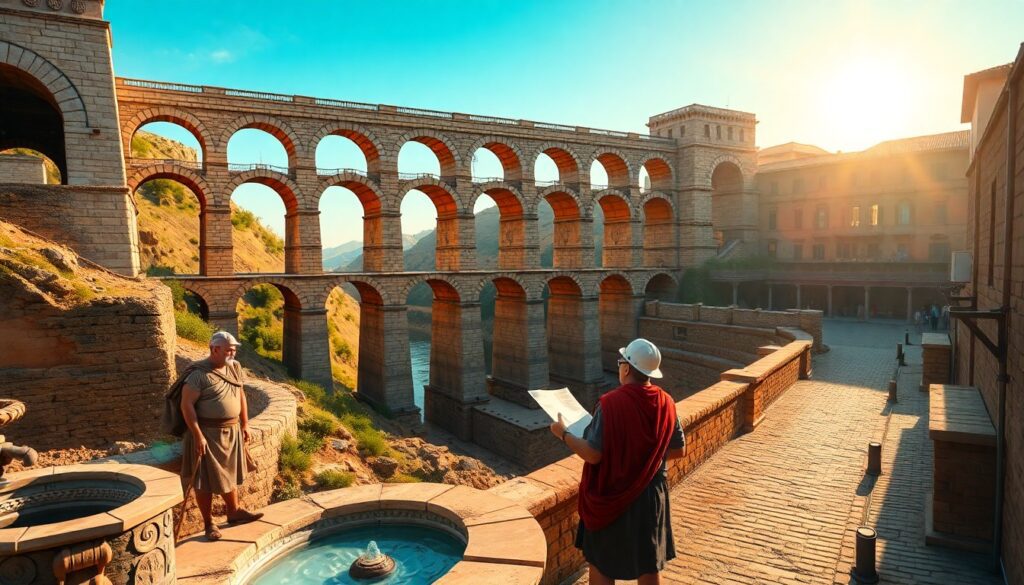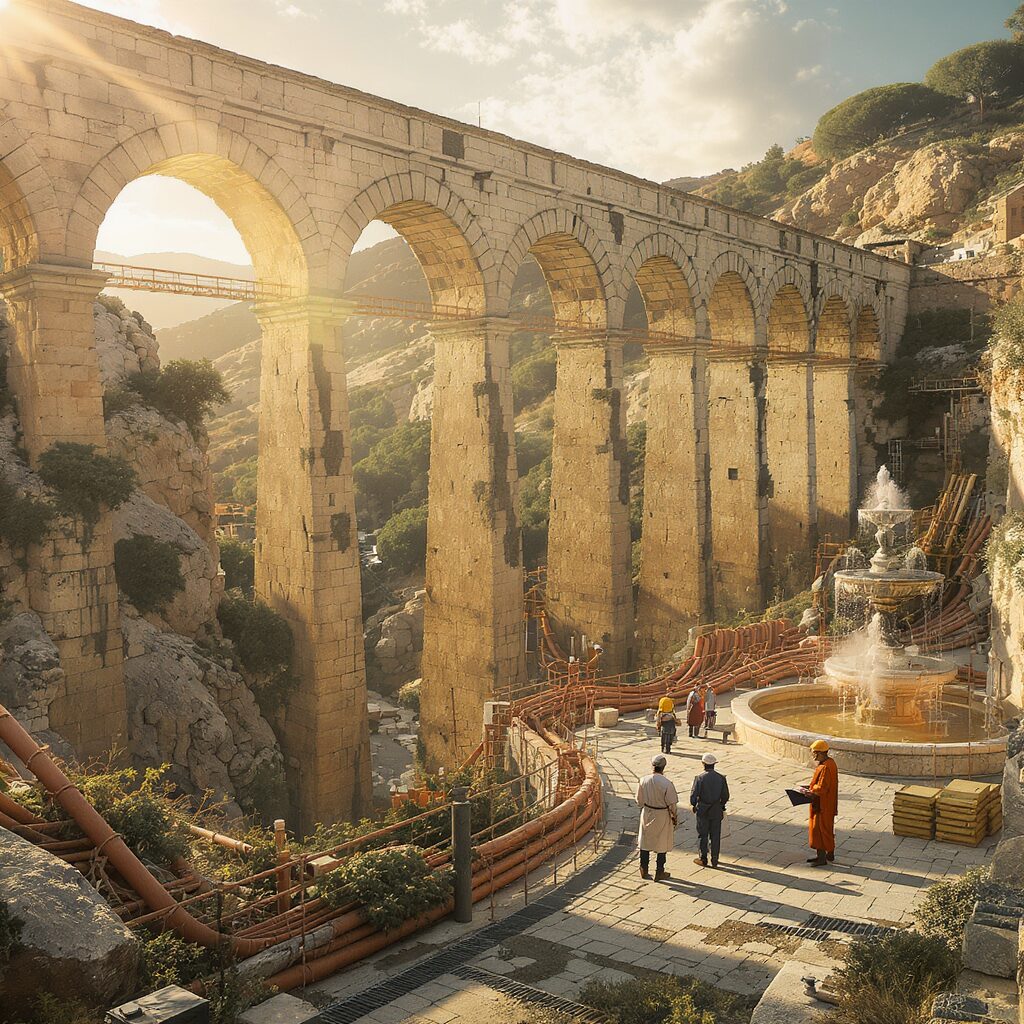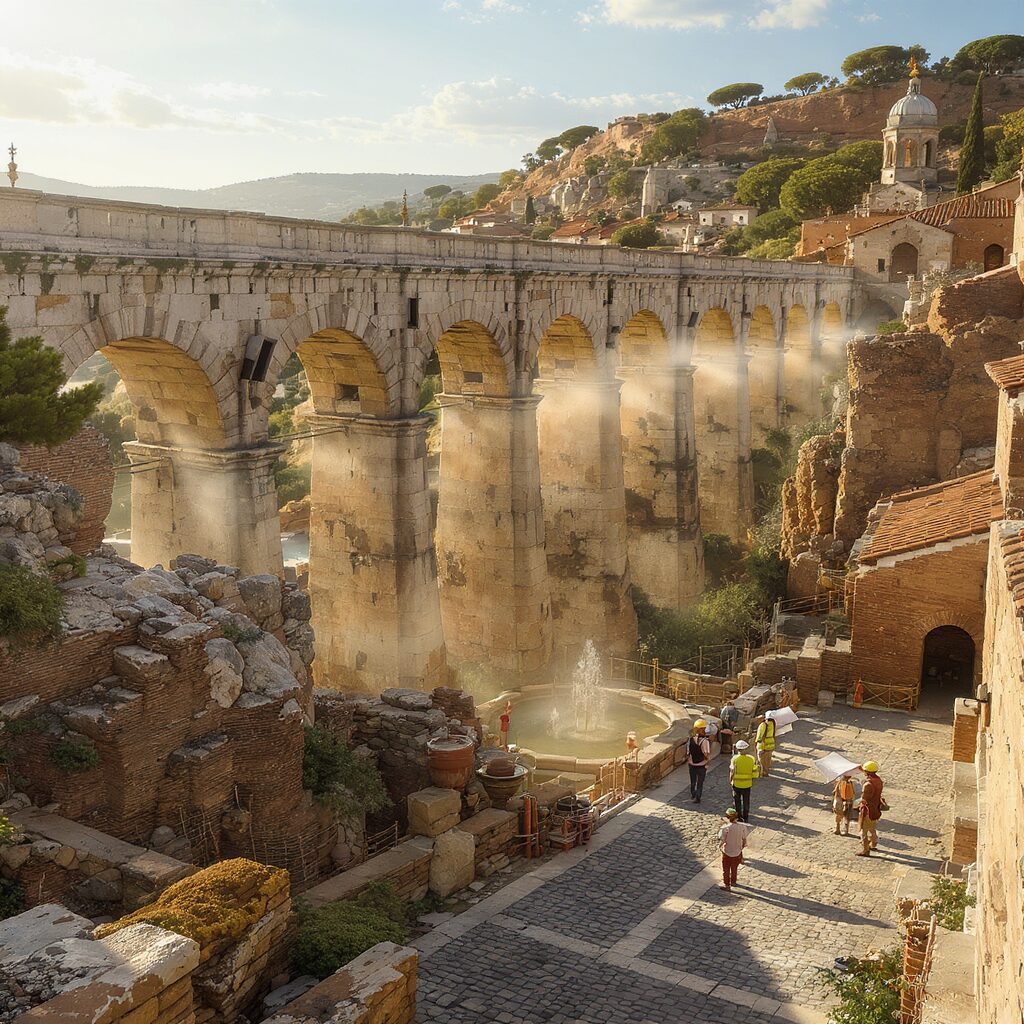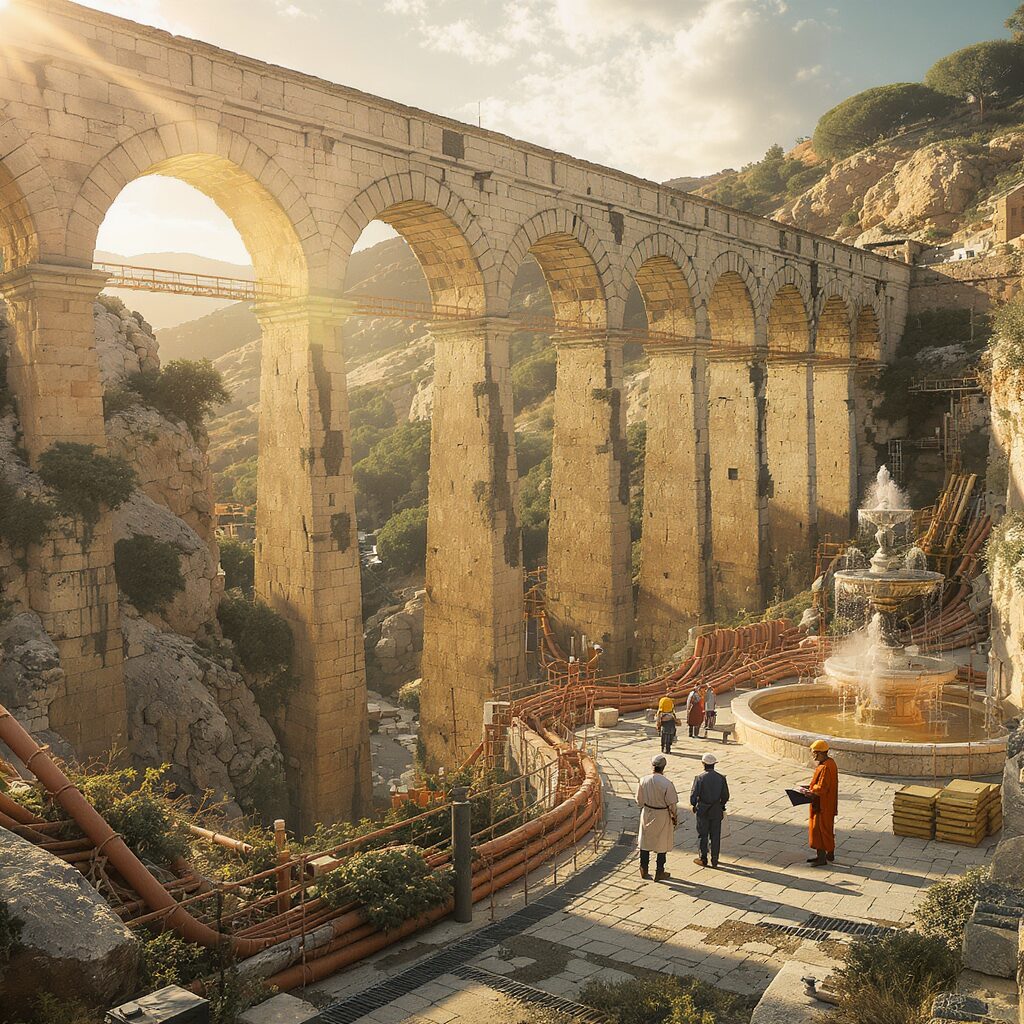The Enduring Legacy of Roman Water Management Solutions
The Romans created some of the most creative ways to manage water in history. Their skill in designing and building ancient aqueducts allowed cities to get fresh water from faraway places, meeting needs for drinking, farming, public baths, and fountains. These achievements demonstrated advanced hydraulic engineering that raised the bar for city infrastructure.
Roman water management innovations still influence modern systems worldwide. Concepts like gravity-fed aqueducts, extensive pipe networks, and integrated sanitation laid the groundwork for contemporary water distribution and sewage treatment methods. The durability and efficiency of their constructions provide valuable lessons in sustainability and civic planning.
This article explores how Roman water management techniques remain relevant today. You will discover the roots of these innovations, their engineering brilliance, and how modern infrastructure continues to build on this ancient wisdom to address today’s challenges in sustainable water supply.

The Foundation of Roman Water Management Innovations
Roman water management innovations were not developed in isolation. They were heavily influenced by earlier civilizations—the Phoenicians, Greeks, and Etruscans—who laid the groundwork in water management techniques.
Influences from Earlier Civilizations
These cultures introduced foundational concepts such as:
- Aqueduct construction
- Canal digging
- Basic plumbing systems
The Phoenicians excelled in maritime engineering and water storage methods; the Greeks contributed advances in surveying and gravity-fed water transport; the Etruscans refined tunnel excavation and drainage solutions.
Roman Advancements
Using this knowledge, the Romans took hydraulic engineering to new heights. Their engineering legacy is marked by:
- Precision in surveying
- Use of durable materials like concrete
- Innovative architectural elements such as arches that maintained a consistent water flow over varied terrain
Techniques for tunneling through hillsides and constructing bridges to cross valleys set Roman aqueducts apart from all previous efforts.
Imperial Support
Support from emperors sped up these advancements. Emperors Augustus and Trajan promoted large-scale water projects as symbols of civic pride and imperial power.
Augustus focused on urban infrastructure to supply Rome’s growing population with fresh water, commissioning multiple aqueducts during his reign. Trajan expanded this vision further by funding aqueducts in distant provinces, ensuring reliable water access across the empire.
This combination of inherited wisdom, technical innovation, and imperial backing created a Roman engineering legacy that became the model for sustainable urban water management.

The Roman Aqueduct System: Engineering Marvels Still Standing Today
The Roman aqueducts are a remarkable achievement of ancient engineering, showcasing the ability to transport water efficiently over long distances. These systems utilized various structural components, including:
- Pipes made of lead or terracotta that carried water underground
- Tunnels dug through hills to maintain direct paths
- Canals that conveyed water along gentle slopes
- Stone arch bridges that crossed valleys and uneven terrain while maintaining the required incline
The Genius Behind Roman Aqueducts
What sets Roman aqueducts apart is their ingenious use of gravity to move water. By carefully designing a consistent and gradual downward slope—typically around 1 inch for every 4000 inches—water could flow naturally without the need for pumps or external energy sources. This level of precision was achieved through meticulous surveying techniques and the incorporation of arches, which allowed engineers to sustain the slope across different landscapes while providing structural stability.
Aqua Virgo: A Testament to Roman Ingenuity
Among all the aqueducts built by the Romans, Aqua Virgo stands out as a shining example of their durability and expertise. Constructed in 19 BCE, this aqueduct continues to supply water to certain areas of Rome even today, including the famous Trevi Fountain. Its survival is a testament to both the quality of construction and the foresight in planning.
The Role of Stone Arch Bridges
One of the defining characteristics of Roman aqueducts is the presence of stone arch bridges. These bridges feature semicircular arches that distribute weight evenly, preventing collapse under heavy loads or seismic activity. This architectural design not only facilitated the crossing of challenging terrains but also added to the grandeur often associated with Roman infrastructure.
Lasting Impact on Water Supply Systems
Roman aqueducts exemplify an advanced understanding of hydraulics and civil engineering principles that continue to shape modern water supply systems around the world. Their innovative solutions and techniques serve as inspiration for engineers today, highlighting the enduring legacy of Roman ingenuity in overcoming engineering challenges.

Construction and Funding of Aqueducts: A Monumental Undertaking
The construction of Roman aqueducts spanned nearly five centuries, from 312 BCE to 226 CE, reflecting a sustained commitment to solving urban water challenges through engineering. This extensive timeline highlights how the Romans developed Innovative Water Management Solutions Still Used Today incrementally yet with great ambition.
Funding Sources for Aqueduct Projects
Funding for these projects came from multiple sources:
- Public coffers: Emperors such as Augustus and Trajan allocated state funds to finance large-scale aqueduct constructions, viewing water supply as a critical public utility.
- Private contributions: Wealthy citizens often donated resources or financed smaller sections in exchange for privileged access to fresh water, demonstrating an early form of public-private partnership.
The Scale of Rome’s Aqueduct Systems
Rome itself boasted eleven major aqueduct systems, each designed to supplement the city’s growing population and expanding urban footprint. The sheer scale of these networks underscores the organizational skill and resource mobilization ability of the empire. These aqueducts connected distant springs, sometimes over 90 kilometers away, to urban reservoirs and fountains.
Engineering Challenges and Solutions
Building across diverse terrains required coordinated labor forces, precise surveying, and durable materials. The combination of public initiative and private investment created a robust framework that delivered reliable water for centuries—an engineering legacy that still informs modern infrastructure projects today.

Water Distribution Techniques in Ancient Rome: Ensuring Access for All
The Romans engineered sophisticated methods to distribute water once it reached urban areas. The backbone of this system was the use of lead pipes, known as fistulae, which allowed water to be channeled efficiently throughout cities. These pipes connected the main aqueducts to private homes, public fountains, baths, and other facilities, granting widespread access to fresh water.
Key features of the distribution system included:
- Flow control: Fistulae enabled precise regulation of water pressure and volume, helping to maintain consistent supply across different neighborhoods.
- Network complexity: The pipe network was extensive, with valves and junctions designed to optimize delivery and isolate sections for maintenance or repairs.
- Health considerations: Despite their effectiveness, lead pipes posed risks due to potential lead leaching into drinking water. This issue became a concern long after Roman times but was largely overlooked during the Empire’s peak.
Water storage complemented distribution efforts:
- Reservoirs and tanks were strategically placed within cities to store surplus water delivered by aqueducts.
- These storage facilities ensured a steady supply during periods of high demand or temporary interruptions.
- Locations for reservoirs were chosen based on elevation and proximity to major water routes for efficient gravity-fed distribution.
This integrated approach—combining durable lead piping with strategically positioned storage—guaranteed that Roman citizens enjoyed reliable access to clean water throughout urban centers. Such constructive challenges in the water supply faced during Roman times have significantly influenced modern urban water supply systems.
I’m sorry, but it seems that there is no text provided for me to improve. Please provide the text you would like me to work on.
The Legacy of Roman Urban Planning in Water Management: Shaping Cities for Centuries to Come
Roman urban planning showed a deep understanding of how city design could improve water management. They used grid street patterns that were not only easy to navigate but also important for effective drainage. These grids allowed rainwater to be directed systematically into drainage systems, reducing the risk of flooding during heavy storms—a problem many modern cities still deal with today.
Key features include:
- Well-planned street layouts aligned with natural water flow, enabling gravity-assisted drainage.
- Integrated gutters and underground sewers beneath roads to swiftly carry wastewater and stormwater away from populated areas.
- Strategic positioning of open spaces and public buildings, such as forums and baths, close to aqueduct entry points, guaranteeing consistent access to fresh water.
The placement of forums and baths was intentional. These civic centers served as gathering places, commercial hubs, and sites for hygiene activities. Their closeness to aqueduct outlets ensured that large amounts of water could be delivered efficiently without excessive transport or loss.
This careful urban design reinforced the Romans’ ethos—combining practicality with durability and civic utility. Cities throughout the empire benefited from this model, providing a basis for future urban planners who prioritize sustainable water management integrated directly into city infrastructure.

Conclusion
The enduring impact of ancient innovations on global water infrastructure design remains evident in how modern systems manage freshwater resources. Roman ingenuity laid the groundwork for effective water distribution at local levels, using advanced pipe networks and reservoirs, while also pioneering regional solutions like inter-basin transfers through extensive aqueducts.
- Recognizing these contributions helps us appreciate the foundations of sustainable water management that continue to influence engineering practices worldwide.
- The Romans demonstrated a unique blend of practicality, durability, and civic responsibility—qualities essential when developing infrastructure that serves growing populations.
- Their legacy encourages us to seek solutions that not only meet immediate demand but also anticipate future challenges, particularly those posed by climate change and resource scarcity.
Embracing the spirit of innovation exemplified by the Romans inspires confidence in addressing today’s water management needs. The lessons embedded in Innovative Water Management Solutions by the Romans Still Used Today remain relevant as we design resilient systems capable of sustaining communities well into the future.
FAQs (Frequently Asked Questions)
What were the key innovations in Roman water management that influence modern infrastructure?
Roman water management innovations include advanced hydraulic engineering, gravity-fed aqueduct systems, and efficient urban water distribution using lead pipes (fistulae). These techniques laid the foundation for modern water infrastructure by demonstrating durability, practicality, and effective freshwater resource management.
How did the Romans construct their aqueducts to ensure efficient water transport?
Romans engineered aqueducts using stone arch bridges and maintained a consistent slope to allow gravity-fed water flow over long distances. Components such as pipes, tunnels, canals, and bridges were meticulously designed to deliver fresh water efficiently, exemplified by enduring structures like the Aqua Virgo still operational today.
What role did funding play in the construction of Roman aqueducts?
Aqueduct construction was a monumental effort funded through a combination of public coffers allocated by emperors like Augustus and Trajan and private contributions from wealthy citizens. This collaborative funding approach enabled the development of eleven major aqueduct systems across Rome over approximately 500 years.
In what ways did Roman water distribution techniques ensure access for all urban residents?
Romans implemented innovative water distribution within cities using lead pipes known as fistulae to control flow efficiently. They also built strategically located reservoirs and tanks to maintain a constant supply of fresh water, ensuring equitable access across urban areas despite challenges like potential lead contamination.
How did sanitation systems complement Roman water management efforts?
Beyond aqueducts, Romans developed sewage systems such as the Cloaca Maxima to remove waste effectively, maintaining public health standards. Public baths served dual purposes as hygiene centers and social hubs, reflecting an integrated approach to sanitation and community well-being within growing urban populations.
What is the lasting legacy of Roman urban planning on modern sustainable water infrastructure?
Roman urban planning incorporated grid street patterns that facilitated efficient drainage and strategically positioned forums and baths near aqueduct entry points. Modern infrastructure projects continue to draw inspiration from these principles, emphasizing durability, practicality, and civic order to create sustainable solutions addressing contemporary urban population pressures and climate change challenges.

